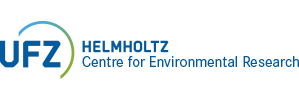Multi-Omics Data Integration for Computation Biology and Toxicology
Our research group is at the forefront of pioneering projects in multi-omics data integration, shaping their applicability for systems toxicology and risk assessment. We focus on developing and implementing best practices for study design and multi-omics data analysis to address complex biological questions and enhance regulatory decision-making.
Our primary aim is to leverage the power of multi-omics data to gain a comprehensive understanding of biological networks and their responses to toxicological perturbations. By integrating various omics layers, such as transcriptomics, proteomics, and metabolomics, we aim to provide a holistic view of molecular mechanisms underlying toxicity.
Our group has published a highly-cited review focusing on the generation and analysis of multi-omics data for toxicological applications. This review has been instrumental in guiding researchers and practitioners in the field.
Methodologically, we are mainly developing pathway-based methods to integrate multiple omics layers:
- multiGSEA: A pathway enrichment tool for the sequential multi-omics data integation (published).
- Topology-Based Multi-Omics Enrichment: A simultaneous multi-omics data integration method that aims to incorporate topological information of biological networks in the enrichment process, providing more accurate and insightful enrichment results (under development).
Currently running and recently finished projects
- XomeTox - Evaluating multi-omics integration for assessing rodent thyroid toxicity
- ToxiGen - Reproductive toxicity and transgenerational effects of petroleum mixtures in fish
- NanoinformaTIX - Development and Implementation of a Sustainable Modelling Platform for NanoInformatics
Related own publications:
Systems toxicology to advance human and environmental hazard assessment: A roadmap for advanced materials (2023).
https://doi.org/10.1016/j.nantod.2022.101735
Prospects and challenges of multi-omics data integration in toxicology (2020).
https://doi.org/10.1007/s00204-020-02656-y
multiGSEA: a GSEA-based pathway enrichment analysis for multi-omics data (2020).
https://doi.org/10.1186/s12859-020-03910-x
MOD-Finder: Identify multi-omics data sets related to defined chemical exposure (2019).
https://arxiv.org/abs/1907.06346
Related own data sets:
Mechanistic study on direct and indirect thyroid toxicity in male Wistar rats - Transcriptomics (2023)
https://www.ncbi.nlm.nih.gov/bioproject/?term=PRJNA695243
Mechanistic study on direct and indirect thyroid toxicity in male Wistar rats - Serum Metabolomics (2022)
https://zenodo.org/doi/10.5281/zenodo.5900663
Mechanistic study on direct and indirect thyroid toxicity in male Wistar rats - Tissue Metabolomics (2022)
http://dx.doi.org/10.21228/M8MD8N
Mechanistic study on direct and indirect thyroid toxicity in male Wistar rats - Proteomics (2022)
https://www.ebi.ac.uk/pride/archive/projects/PXD026835
Mechanistic study on direct and indirect thyroid toxicity in male Wistar rats - Phosphoproteomics (2022)
https://www.ebi.ac.uk/pride/archive/projects/PXD030254
Related own software:
Authors
Sebastian Canzler, Jörg Hackermüller
Summary
Gaining biological insights into molecular responses to treatments or diseases from omics data can be accomplished by gene set or pathway enrichment methods. A plethora of different tools and algorithms have been developed so far. Among those, the gene set enrichment analysis (GSEA) proved to control both type I and II errors well.
In recent years the call for a combined analysis of multiple omics layer became prominent, giving rise to a few multi-omics enrichment tools. Each of which has its own drawbacks and restrictions regarding its universal application.
Here, we present the multiGSEA package aiding to calculate a combined GSEA-based pathway enrichment on multiple omics layer. The package queries 8 different pathway databases and relies on the robust GSEA algorithm for a single-omics enrichment analysis. In a final step, those scores will be combined to create a robust composite multi-omics pathway enrichment measure. multiGSEA supports 11 different organisms and includes a comprehensive mapping of transcripts, proteins, and metabolite IDs.
Important links
| Software download | https://github.com/yigbt/multiGSEA |
| Documentation | http://bioconductor.org/packages/release/bioc/vignettes/multiGSEA/inst/doc/multiGSEA.html |
| Bioconductor devel package | https://bioconductor.org/packages/devel/bioc/html/multiGSEA.html |
| Citation | Sebastian Canzler, Jörg Hackermüller. multiGSEA: A GSEA-based pathway enrichment analysis for multi-omics data. BMC Bioinformatics 21, 561 (2020). https://doi.org/10.1186/s12859-020-03910-x |
